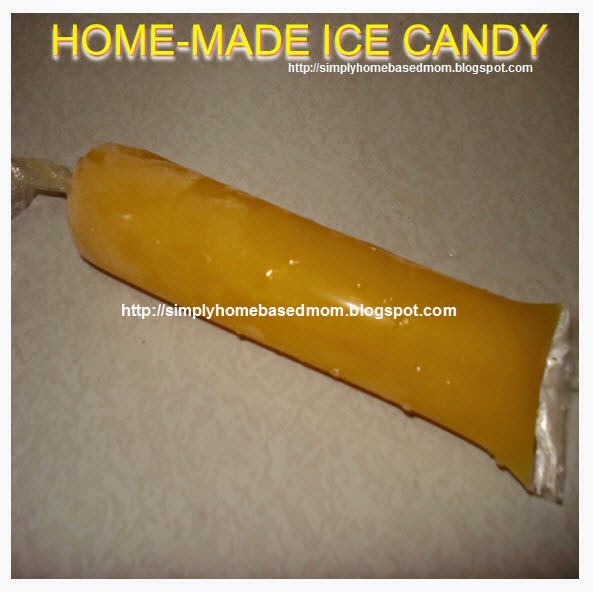Make your very own ice candy for your family and neighborhood. It's quote easy and very economical because the ingredients to be used are not too expensive and readily available at the nearest sari-sari store or public market near you. Of course, you can always bring your ice candy to the next level if you wish to convert it into halo-halo like version as one of the Filipino Delights during summer :) The process of making this cool delight is just a matter of mixing its components. So follow these easy steps. Try it for your family and you also can sell ice candies to your neighbors in which most kids will surely love!
In making the ice candies, consider 100% cleanliness. The preparation area must be cleaned and free from all sorts of dirt and bacteria. I cook the ingredients and let it cool before putting in into the freezer. This way, the food that you will serve is very safe even to toddlers.
You can explore the flavors, chocolate (cocoa or milo/other brands), orange, mango, grapes where u can use the fresh fruits or blend it with instant juices like Tang or Eight o'clock.
Example Flavor: Chocolate Ice Candy(ies)
- 1 standard casserole of water approx 6L
- 1 big condensed milk
- 1/4 kilo cocoa or you can convert into Milo or Ovaltine (more expensive)
- 1 kilo brown sugar
- 50+ pcs. Ice candy cellophane “Ice Candy wrapper”
- 1/4 kilo of flour for thickening purposes
How to Make the Chocolate Ice Candy(ies)
- Boil the water in casserole.
- In separate bowl, mix the cocoa powder (note: Use hot water), don't put it yet into the caserole.
- Mix the thickening flour in separate bowl (note: use cold water).
- Put the brown sugar into the boiling water.
- Stir continuously while boiling.
- Add the mixed flour and cocoa to the boiling water in caserole.
- On low heat, add the condensed milk, it may overflow.
- Taste it. you may more ingredients if needed depending on your taste.
- Let it cool before packaging.
Packaging the Ice Candy(ies)
- Prepare your ice candy wrapper, funnel, and a ladle.
- Insert the tip of the funnel in cellophane and hold tight.
- Ladle ice candy mixture into the cellophane leaving at least 2 inches for sealing or the size of your ice candy is approx 4.5 ~ 5 inches long.
- Twist the cellophane to seal the mixture and knot tightly.
- Repeat the same procedure until all wrapped.
- Freeze ice candy overnight before serving.
You can now serve it for free taste. If you want to sell it, per piece is 2-3 pesos. You can calculate all of your ingredients used and divide it with how many pcs total did you make?
That's how you will visualize your profit. Go mommies, while the weather is hot, we can make cold cash here. Good luck :)
Like and Share This Post:








































